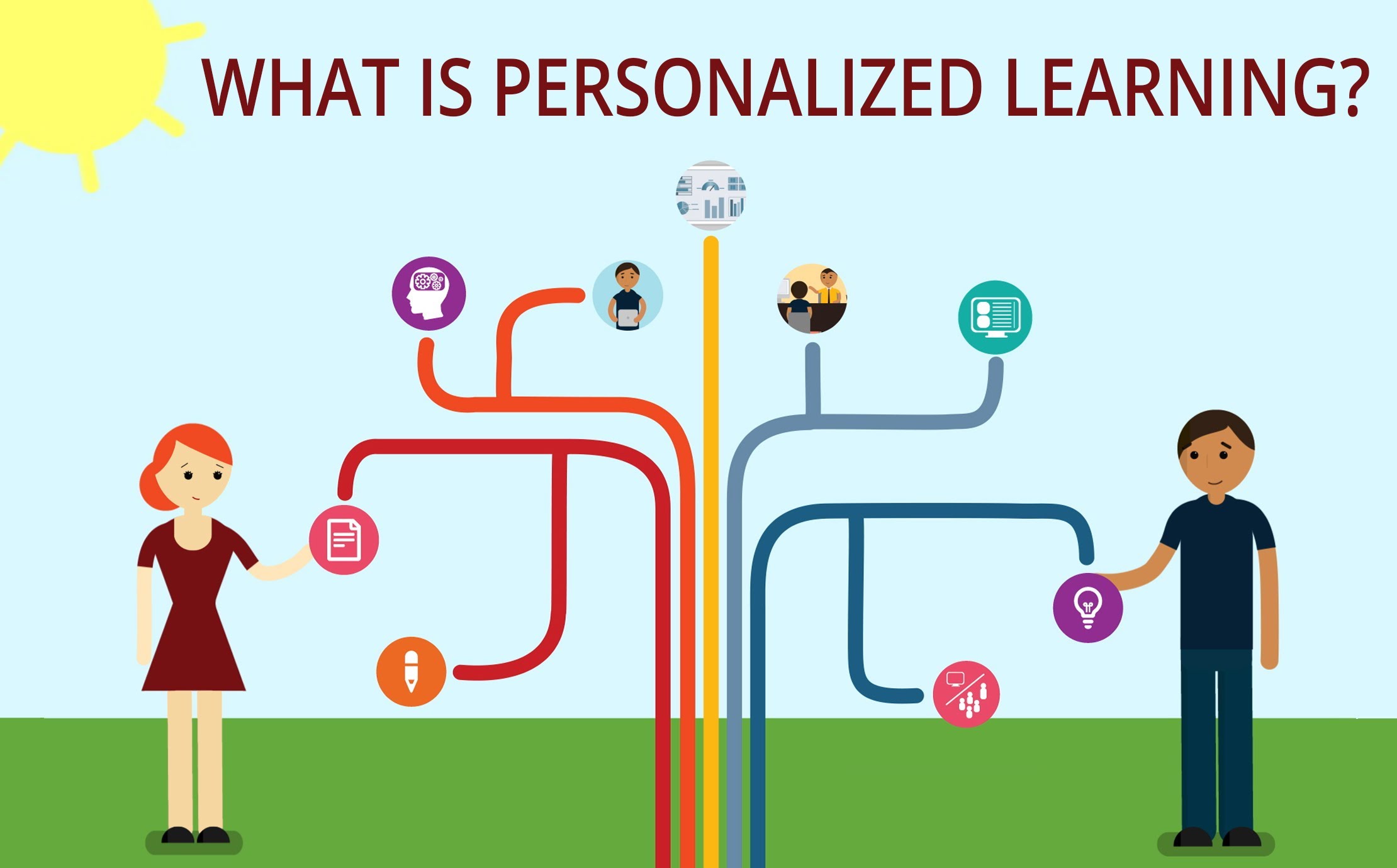
Personalized Learning
The term personalized learning refers to a diverse variety of educational programs, learning experiences, instructional approaches, and academic-support strategies that are intended to address the distinct learning needs, interests, aspirations, or cultural backgrounds of individual students.
Modern classrooms are full of students with different interests, backgrounds, abilities and learning needs. To engage these students, learning must be every bit as diverse as they are. The concept of personalized learning has been around for a long time but did not catch on until recently because teachers lacked the tools to tailor material in a highly personalized way. Technology has changed all of that. Tech companies have produced a wide array of products, courses and platforms that now allow educators to provide a classroom full of different children individualized material designed to suit their particular needs. Many prominent figures of the tech community have donated their fortunes to fund research, innovation and help create hands-on learning applications in the field of personalized learning.
?????????????????
Different methods of learning-- Personalization, Differentiation, Individualization.
Individualization refers to instruction that is paced to the learning needs of different learners. Learning goals are the same for all students, but students can progress through the material at different speeds according to their learning needs.
Differentiation refers to instruction that is tailored to the learning preferences of different learners.Learning goals are the same for all students but the method or approach of instruction varies according to the preferences of each student or what research has found works best for students similar to them.
Personalization refers to instruction that is paced to learning needs and tailored to learning preferences and specific interests of different learners. In a fully personalized environment, learning objectives, content, method and pace may all vary from learner to learner. Personalization encompasses the concepts of both individualization and differentiation.
?
Core elements of Personalized Learning.
Flexible Content and Tools- Personalized learning is never solely about the technology or digital content, it is the integration of flexible content and tools essential for a successful personalized learning classroom. Teachers need to understand how to use adaptive and customizable content and tools in order to differentiate the path, pace, and performance tasks of learning. Digital content and tools do not replace the teacher; rather, they work alongside the teacher to better support students? needs by providing remediation, practice, extension, and a variety of other ways to demonstrate knowledge authentically.
Targeted Instruction- Targeted Instruction involves breaking down the whole-group structure found in traditional classrooms in order to better meet the needs of students. Using data, teachers are able to create and change student groups frequently and purposefully based on student interest, need, or skill-level. The small groups can be formed using various strategies, such as grouping students with homogenous skills so teachers can focus their lessons or heterogenous skills to encourage collaboration.
Data Driven Decisions- In successful personalized learning classrooms, teachers frequently collect and review data to identify trends and areas that need improvement. Through such analysis, teachers can modify their instruction to meet the data-driven needs of students.
Student Reflection and Ownership- Students need ample opportunities to reflect on their own learning. Although far from simple to accomplish, Student Reflection and Ownership begins with a teacher helping students to track their own data and set specific learning goals. Teachers should provide mentorship and support as students develop the skill of reflecting on their own learning. With practice, Student Reflection and Ownership lead students to become self-directed learners who take ownership of their academic futures.
?
?The benefits of Personalized Learning.
When the pace of learning is adjusted for each learner, all learners have the time needed to demonstrate mastery.
When learning is optimized and tailored for each learner, it can be more meaningful and relevant, which can lead to greater engagement and achievement.
When learners are given more choice, they tend to take more ownership of their learning and develop the academic mindsets, learning strategies, and self-regulated learning behaviors that are necessary for meeting immediate goals and for lifelong learning.
?
When learning is supported by technology, learners can receive more frequent and immediate feedback through formative assessments, quizzes, and checks for understanding with results provided to teachers and learners in real time.
The use of technology to provide teachers with the ability to tailor instruction to individuals allows teachers more time to provide targeted attention to learners who are struggling or who are progressing more rapidly than their peers, rather than being forced to adopt the "one size fits all" method.
?
Modern learning is the ultimate collaboration between teacher and student. The teacher must assess each individual?s needs, then prescribe the right solution for that person by crafting an appropriate curriculum and delivering it in a way that is meaningful.? At the same time, students know on some level what teaching-learning style works best for them, and they must contribute to the creation of their personalized curriculum. Technology? when employed properly and meaningfully? can help educators deliver differentiated, individualized and personalized instruction. It can help facilitate timely responses, involve parents more in their children?s learning, empower school leaders with data to support teachers, and either break down problems or make those problems more complex, based on the individual needs of the student. It?s up to teachers to connect the appropriate tools with the right students? and, in the case of personalized learning, allowing students to make suggestions and control their own academic experiences.
?
NEET Chapter Wise Weightage 2018
Previous PostTRADITIONAL ASSESSMENT VS ONLINE ASSESSMENT
Next Post





